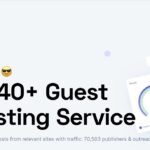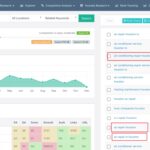
Keyword Research
The first step to optimizing your website for search engines is do the keyword research. “Keyword research” just means: figuring out what keywords (or search phrases) to target. Your website should get found for your business name by default, but the beauty of SEO is you can get found for other keywords too (like ones searched by people looking to buy your products or service). That is a lot more powerful!
There are a lot of tools that can be used for keyword research- tools that tell you things like how much traffic the keyword phrase gets, how much competition there is for the phrase, and other metrics. And those tools aren’t cheap (unless you use Google Ad’s “Keyword Planner” and Microsoft Advertising’s “Keyword Planner”). Those keyword planners are free if you’re using those ad platforms anyway (I’ll get into advertising in later lessons). However, to find the “money” keywords, i.e. keywords that result in actual sales for your business, the best thing is to use your brain. Ask yourself these two questions…
- What is your business? (not, what does it do?)
- Where is it located?
If your business is a framing contractor in Riverside, California, then focus your website on the phrase:
“framing contractor riverside”
You can verify that people actually search for that phrase by using Google’s auto-suggest. Just start typing it into Google Search and see if it auto-completes…
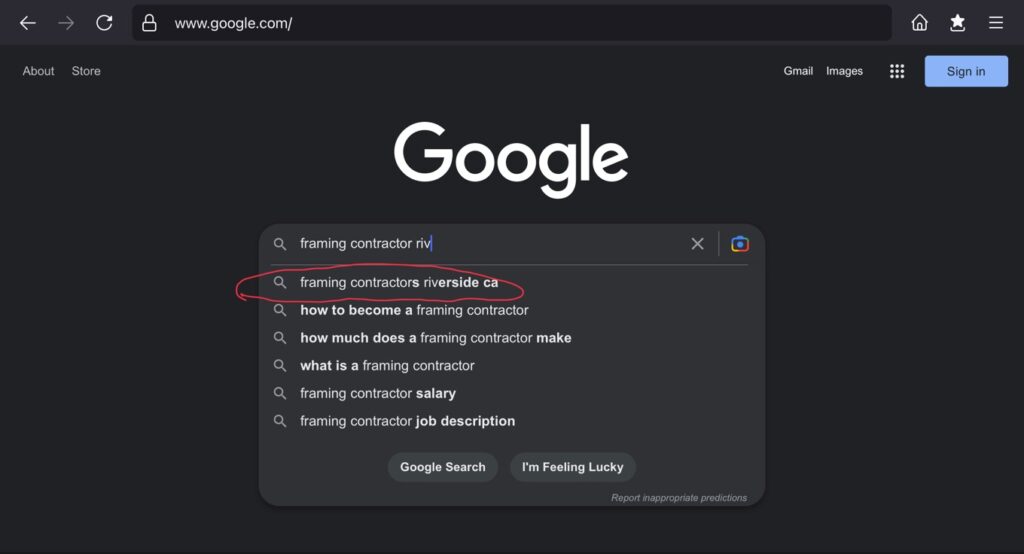
We can see that the ideal phrase is “framing contractors riverside ca”. Now, Google’s algorithm is smart enough to know that we are only one business so we don’t need to target “contractors” (plural). We can just use “contractor” (singular). We can also use the full spelling of “California” instead of “CA”. Google will know that too. So if we target “framing contractor riverside california” on our site, we’re set.
Focus on What Your Business is not Does
It’s common for business owners to always describe what they do rather than what they are. For example, you often see advertising on service vehicles that might say:
- “Plumbing”
- “Air Conditioning”
- “Heating”
- ”Electrical”
- “Solar Installation”
- etc.
all words that describe what they do but not what they are. For SEO, you want your keywords to describe what you are because people who are looking for a:
- “plumber
- “air conditioning contractor”
- “heater repair service”
- “electrical service”
- “solar installation company”
are looking to hire their services. So that’s a biggy! You don’t want to attract people who are searching for “plumbing” because they want to learn how to do plumbing themselves. You want to attract people who are shopping.
In situations like “pest removal”, of course, not many people search for a “pest remover”. So in that case, just add “company” or “service” to the end: “pest removal service”.
Also, there are some outlying scenarios where it’s okay to use what you do keywords. Repair businesses are one such case. If someone searches “AC repair San Diego” or “auto repair San Diego”, they are obviously looking for a business. The do-it-yourselfers would search for specific car problems. So just use your mind.
For e-commerce sites (businesses that sell products) use keywords that describe what kind of store you have. For example, I have a client that sells fedora hats so for his site I targeted “fedora hats”. In addition to his e-commerce site, he has a physical shop in LA so we also target “fedora hat store los angeles” and “fedora hat shop los angeles”. Your internal/product pages should naturally target the individual product keywords when you list the products on your site.
Using Keyword Planners
To see exactly how much traffic the keywords you’re thinking about get, or to get more ideas for keywords, you can use the Google Keyword Planner. You’ll have to open a Google Ads account to use it. Go to:
and sign in with your Google account. When you first open the Ads account, Google will onboard you through a watered-down, almost useless version of Google Ads. You’ll need to sidestep that to get to the normal Google Ads dashboard. First, it will ask you for your business name- go ahead and enter it. Then, it will ask you for your website’s URL- go ahead and enter that. Next, it will show you a sample of what your website looks like. When you see that, look down at the bottom of the screen where small text says “switch to expert mode”. Click on that! Next, it will start to set up your first ad campaign- just click “skip”. You should now be in the normal Google Ads dashboard. When you’re finally there, click on “Tools” in the top bar…
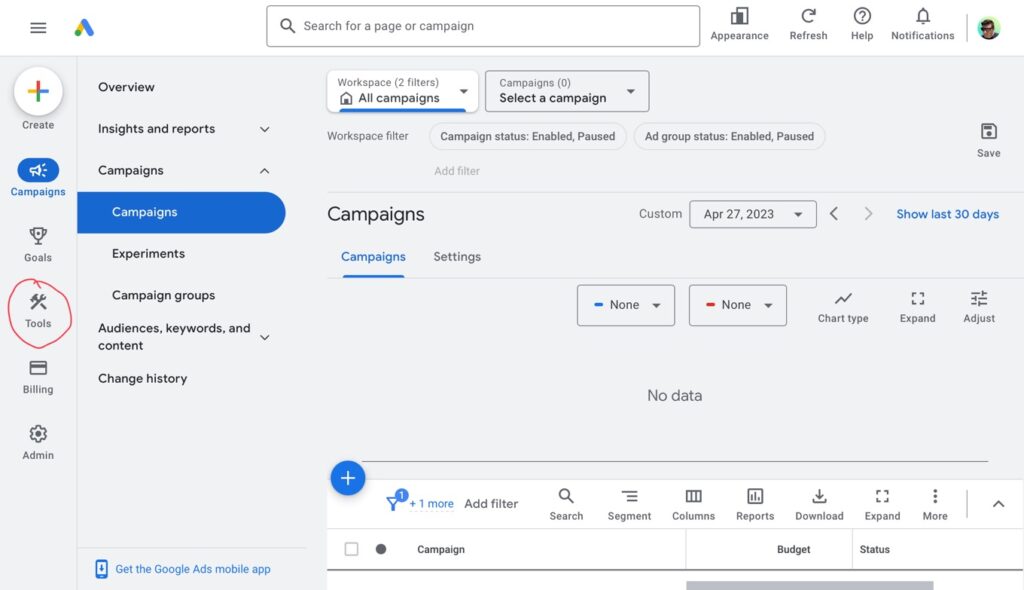
Then click on “Keyword Planner” underneath the “Planning” heading…
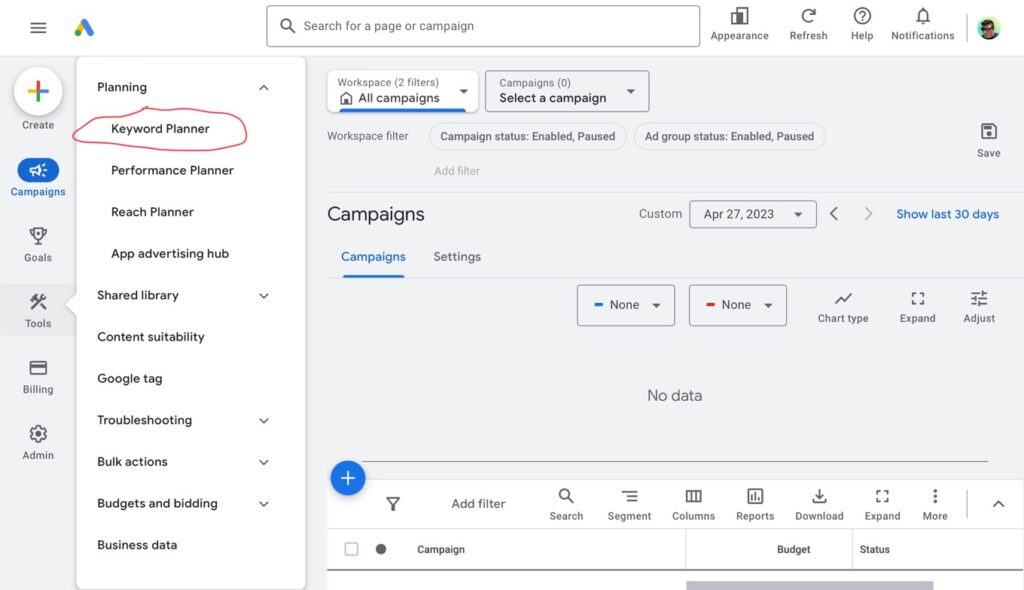
Then choose “Discover new keywords”. It is useful for both discovering new keywords and seeing search data…
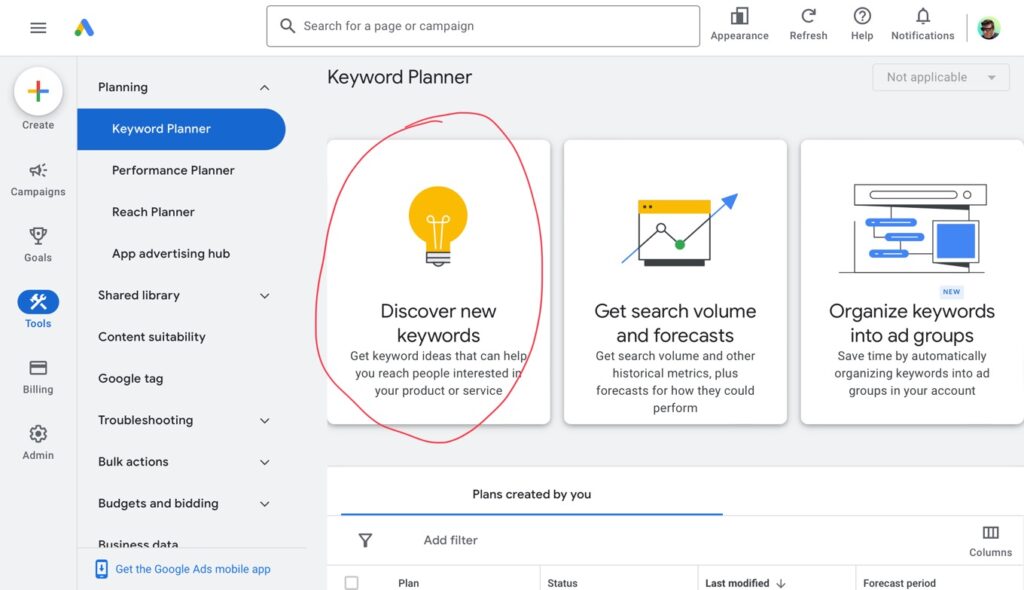
Now, let’s try typing in our framing contractor keyword phrase and then click on “Get results”…
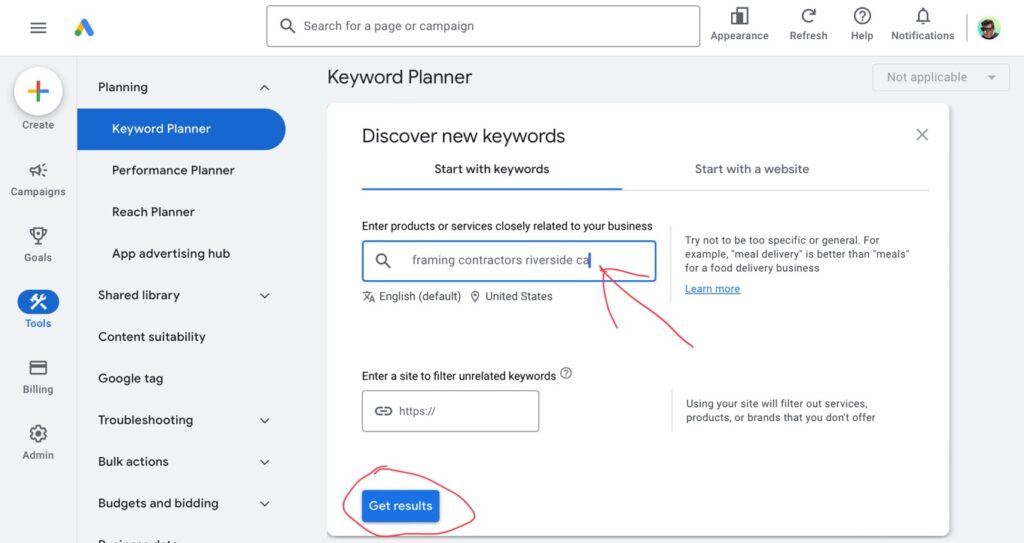
We see now that the phrase only gets 10 to 100 searches per month. That’s very low. And that’s because the client is a business-to-business company (not a business-to-consumer). So I wouldn’t expect a lot of people looking for them (especially in only Riverside). However, on the upside, we can see that the competition is low. So it will be easy to get their site to rank onto page 1 of Google…
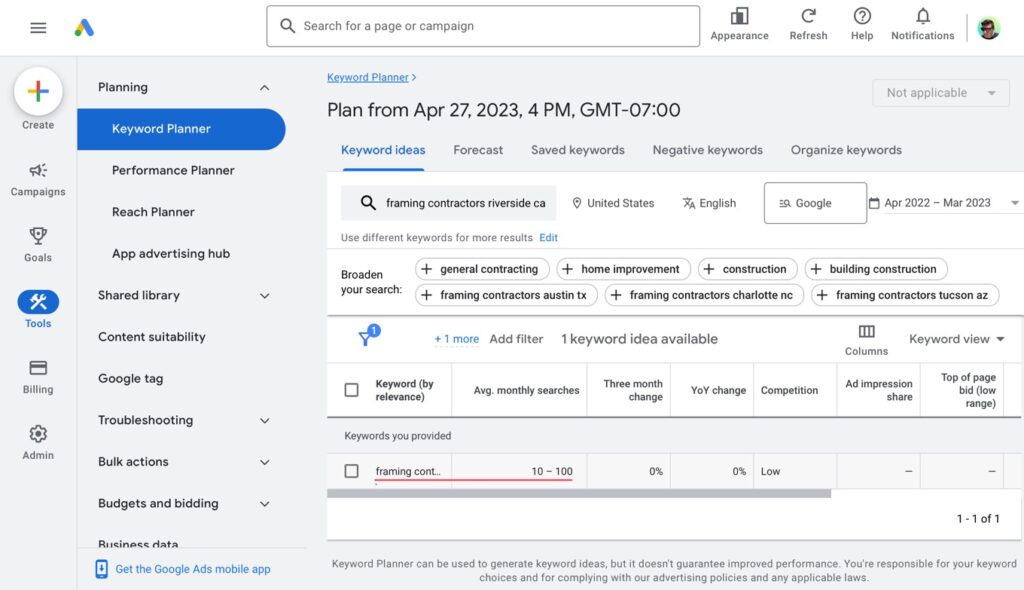
Another client is a fedora hat store. When I type in “fedora hats” I see that it gets 10,000 to 100,000 searches per month. And it also tells me that “fedoras” alone gets 100,000 to one million searches a month. So this niche gets a lot more! (as I expected it would). It’s targeting consumers nationwide who are shopping. However, the competition for these keywords are high so this client’s e-commerce site will be a lot harder to rank in Google.
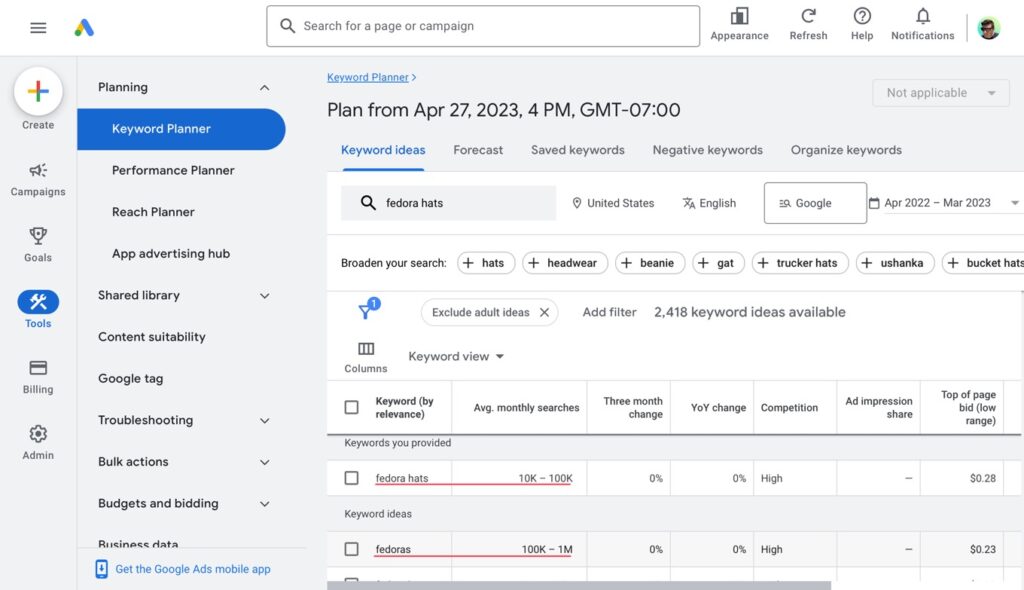
But remember, this client also has that physical store in Los Angeles so when I try narrowing the keyword phrase down to include LA, we see the searches drop down significantly (back down to 10 to 100 searches). And that again, will be much easier to rank…
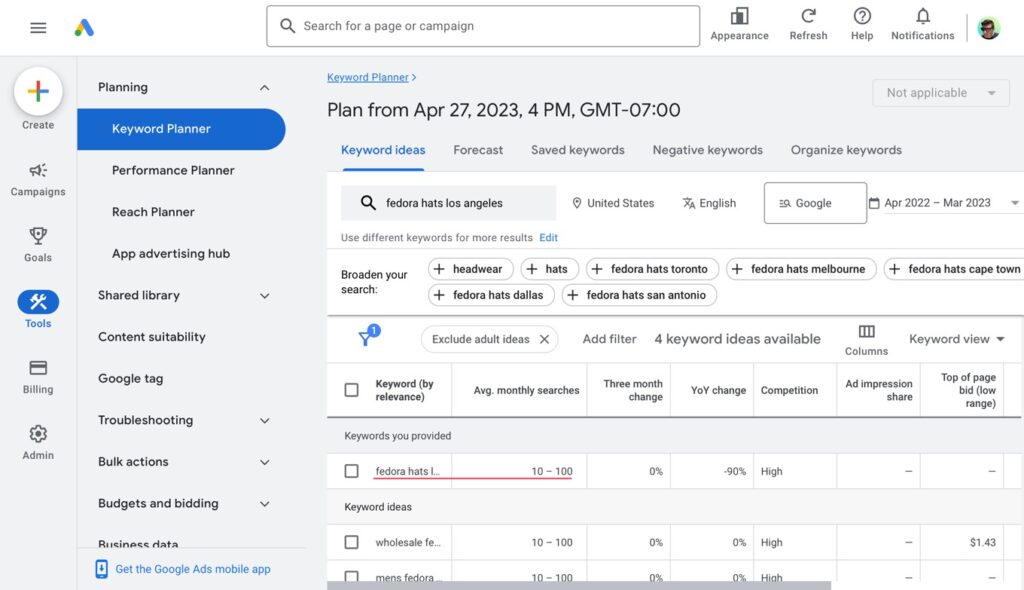
So the moral of the story is: You have to find your own equilibrium. Find keywords that get enough traffic but also are easy enough to rank.
Note: Lately Google has been cracking down on inactive accounts that are not really used to advertise a business on the platform. They are now requiring that every account uploads documentation that proves you actually own a business (like a DBA form).
Using Keyword Research Software
If you want to spend a little money on keyword research, you can use web-based software called KeySearch. It really goes into detail with your keyword research (instead of just surface level). It will find the best keyword phrases for you, analyze the competition, and measure difficulty to rank for those keywords. It can also spy on your competition to see what keyword phrases they are targeting.
However, the reason why I like it and the reason why I use it is to simply find the best keyword phrase to target. It could take hours of research using the free/manual methods without this tool.
Let’s take the hat shop for example. In the screenshot below, I entered in the word “fedoras” in the search field and let it run. It then showed the results on the right column. All I had to do next was click on “Score” a couple of times to show me keyword suggestions in the order of easiest to most difficult. The very top suggestion reveals that “wide brim fedoras” is searched over 6,000 times a month and the competition score is 32 (green). That means I need to be targeting that keyword phrase with my client’s site…
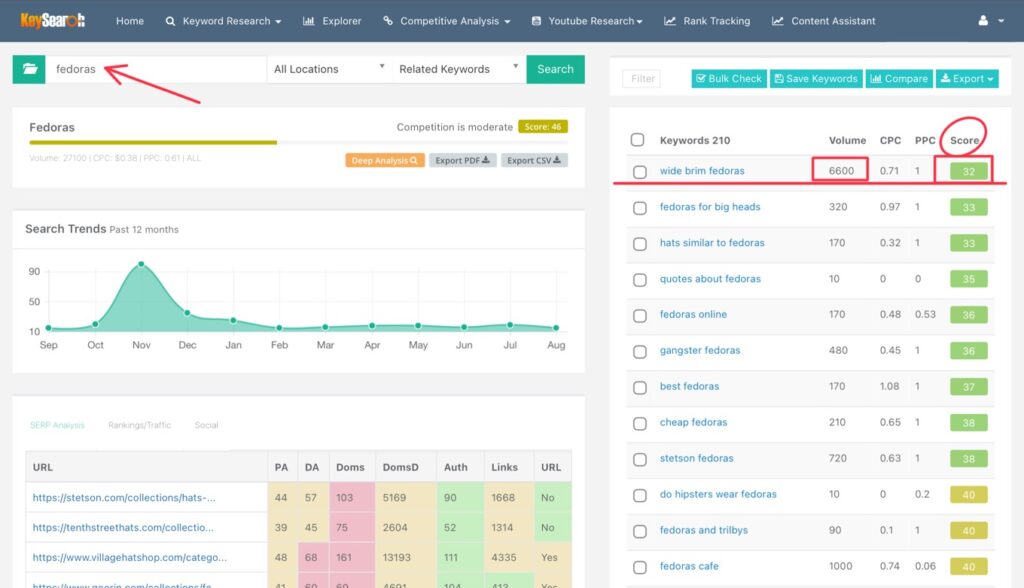
For 20% OFF KeySearch, click here and use code: KSDISC
In the next lesson, you’ll learn where to place those keywords on your website (a concept called “On-page SEO”)…

